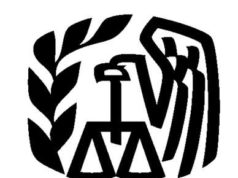
An individual
retirement account, commonly known as an IRA or traditional IRA, is a
retirement plan that allows the account holder to make pre-tax contributions to
save for future use. Individual retirement accounts are created through a
financial institution such as a bank or a brokerage firm which allow the
account holder to deposit funds from wages earned before taxes. The money
deposited can accrue interest if place in certificates of deposit from banks or
in mutual funds through a brokerage firm.
Individual retirement accounts were first made available in
1975, but were officially noted under the Tax Reform Act of 1986 (TRA) as a
part of the Internal Revenue Code. As such, the Internal Revenue Services (IRS)
defines an IRA as a qualified retirement plan.
Traditional individual
retirement accounts also allow the account holder to receive certain tax
deductions only if they qualify under guidelines set by the IRS. These
guidelines include having income, tax filing status, and being able to invest
in other qualified retirement plans. The funds placed in an individual
retirement account are not taxable under federal income taxes as the funds are
deposited on a pre-tax basis. This means that contributions are made before the
account holder receives wages and uses them, thus deducting them from the
account holder’s annual income.
The IRS also places additional restrictions on individual
retirement accounts in regard to withdrawals, also known as distributions, and
contributions. The IRS penalizes any withdrawals made from an individual
retirement account prior to the age of 59.5 by taxing those monies under
federal income taxes just as with a 401(k) plan. This is because those funds
are being used for purposes other than retirement and have been returned to the
account holder’s annual income.
Additionally, funds in an individual retirement
account must be distributed prior to the account holder reaching the age of
70.5. This allows the account holder to continue to accrue interest for a
period of time after reaching full retirement age. The IRS also places annual
restrictions how much money can be contributed to an IRA. This means that the
account holder can make contributions up to the maximum amount as set by the
IRS. If the contributions exceed that amount, the excess must be withdrawn
prior to April 15th of the next tax year.
retirement account. The IRS has the power to disqualify the account and then
tax the account holder on the contributions contained in said account. If the
account holder needs money from the IRA, he or she must make a distribution
which is then taxed and noted by the IRS.
retirement accounts, as pre-tax deferred compensation retirement plans, does not
allow the account holder to place post-tax monies into the account. This is
done to ensure that the account holder is properly saving for retirement and
not using the account as a checking account, for example.


























